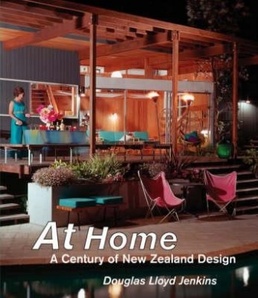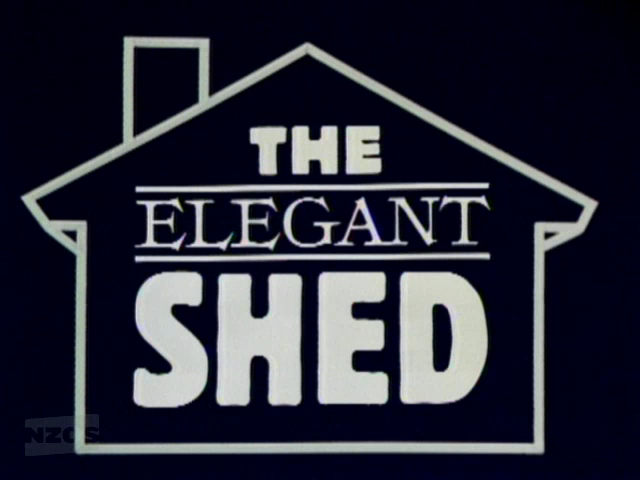http://www.nzonscreen.com/title/the-elegant-shed-behind-the-garden-1984
|
The full episode of "The Elegant Shed: Behind The Garden" can be viewed on the NZOnScreen website.
http://www.nzonscreen.com/title/the-elegant-shed-behind-the-garden-1984
0 Comments
“The Elegant Shed” was a six-part documentary series which aired on New Zealand television in 1984. Hosted by architect David Mitchell, it was a highly influential take on New Zealand’s post-war architecture and design, and it, along with it’s accompanying book (“The Elegant Shed: New Zealand Architecture Since 1945”) made for one of the first critical assessments of the nation's modernist movement. The episode “Behind The Garden” focusses on the ‘Christchurch Style', and includes a long interview with its principal practitioner, architect Miles Warren. The Dorset Street Flats, just 25 years old at the time, feature prominently, including an impromptu sketching by Warren of the building layout. Videoclip licensed from TVNZ Television Archive. http://www.dorsetstreetflats.com/the-elegant-shed.html  ASSESSMENT CRITERIA FROM HERITAGE NEW ZEALAND: ARCHITECTURAL SIGNIFICANCE OR VALUE. The Dorset Street Flats, with their axial planning, load-bearing exposed concrete block walls, concrete beams, negative detailing and bold use of colour typify the attitudes to materials and structure in architecture favoured by New Brutalism, an avant garde architectural moment within the Modern Movement that began in Britain in the mid-1950s and was highly influenced by the post-war work of Le Corbusier. Miles Warren encountered the birth of New Brutalism when he was working in Britain in 1953-54 and visited Le Corbusier's most important post-warwork, Unite d'Habitation (1949-54) in 1955. The manner in which openings in the masonry walls were treated also showed the influence of Danish architect Finn Juhl. Warren's particular approach to contemporary, European architectural ideas as explored in the Dorset Street Flats was highly influential and in the Flats Warren set what would become the hallmarks of a local response to the principles of New Brutalism. Warren's careful and particular design approach was applied to every aspect of the detailing, fittings and in-built furniture of the flats, reflecting what would become a career-long interest in total design. http://www.heritage.org.nz/the-list/details/7804  The most influential house to be built in the South Island during the 1950s wasn’t a house at all but a series of flats. Architect Miles Warren had spent a period in England before returning home to form Warren and Mahoney, but first he went solo on a series of concrete-block flats in Dorset Street, Christchurch. It is often claimed that this was the ‘first conscious use of concrete block and fairface concrete construction inside a New Zealand house or flat’. Concrete block was everywhere in the mid-1950s, but the Dorset Street Flats (1956-57) was one of the new material’s most elegant early outings. The claim that should be made for the Dorset Street Flats is that it provided one of the first attempts in recent memory at a unit suitable for urban living, built around the needs of a single person not reliant on the state for housing. As Home and Building put it, the flats were to be occupied by ‘young bachelor owners’. Warren had returned from England influenced by English Brutalism, and the result was a series of units that were crisp, sharp-edged and more than a little classical - a new English terrace house for the most English of New Zealand cities. Here were eight one-bedroom apartments, each containing ‘a living room, bedroom, small kitchen and shower, w.c., and basin opening off the bedroom, all within an area of 450 sq ft’. The four ground-floor flats each had their own private courtyard garden, presenting a carefully protected landscape for their occupants to enjoy. As architecturally exciting as Dorset Street was, any prestige the building is accorded needs to be shared with its original interiors, which are often overlooked in the exultation of its architectural form. These were not box-like rooms, but one intimate space in which elegance derived from rich furnishings that glowed against the matte-white concrete-block walls. In the living room of Warren’s own apartment, modern Scandinavian furniture sat in front of the architect’s built-in wall units (the fold-down fronts of which were faced with neoclassical architectural drawings). A Lucie Rie tea service sat among books on the shelf. These modern elements were complemented with the use of antique furniture and richly coloured Turkish carpets. Whereas antique furniture in previous 1950s interiors had simply seemed old, Warren’s interior suggested a new possibility in which traditional pieces might underpin the modern direction of the interior. What Warren had created was barely a flat at all, but the prototype for a new urban style of interiorised living that would become better known as the town house. What Dorset Street says most loudly is that not everyone wants a lawn; not everyone wants a family; not everyone wants to put away the things that matter to them; and in this, these small houses were prescient. Today when we look at Dorset Street it is a little hard to imagine that these are not four double-height units, so common did the two-storey town house become. However, when the public first saw the Dorset Street Flats in the pages of Home and Building in 1959, three years after their completion, there was still little like them anywhere in the country. DOUGLAS LLOYD JENKINS, “At Home: A Century of New Zealand Design”, Godwit (Random House), 2004, ISBN 1-86962-110-7, pp 161-163. Reproduced with the permission of the author. http://www.dorsetstreetflats.com/at-home.html  ASSESSMENT CRITERIA FROM HERITAGE NEW ZEALAND: AESTHETIC SIGNIFICANCE OR VALUE. The Dorset Street Flats strongly express the sense of weight and enclosure provided by masonry construction as well as the pleasing and contrasting textures and appearance of precisely laid and exposed blockwork, both painted white and unpainted, concrete, clear- varnished timber and brick. The use of a limited range of materials and total design approach make the Dorset Street Flats an aesthetically consistent living environment. The carefui composition of the elevations creates a pleasing balance of solid and void created by the shadows cast in the deep recessions contrasting with the crisp planar white-painted wall surfaces. A sense of expanding space is created by the openness of the planning, especially on the ground floor where the sliding doors into the bedroom and the courtyard create a continuous living space. This is further enhanced by the abstract sense of the division of space, with floor, wall and ceiling surfaces continuing beyond the edge of the building plane. There is also a successfully strong aesthetic contrast between the starkness of the flats and the lush, green foliage of their verdant gardens. The uncompromising use and treatment of what were then regarded as industrial materials in the domestic setting of the Dorset Street Flats were radical in New Zealand and illustrated Le Corbusier's influential treatment of materials. http://www.heritage.org.nz/the-list/details/7804 |
AuthorKeep up to date by joining our Facebook page. Click on the icon above. Archives
February 2024
Categories |


 RSS Feed
RSS Feed